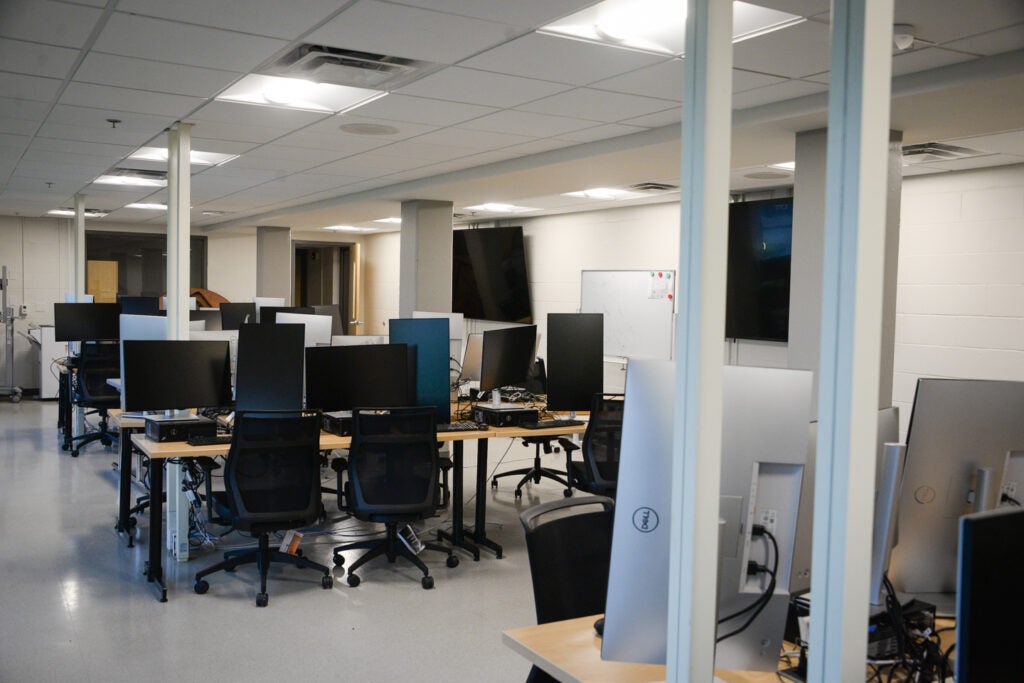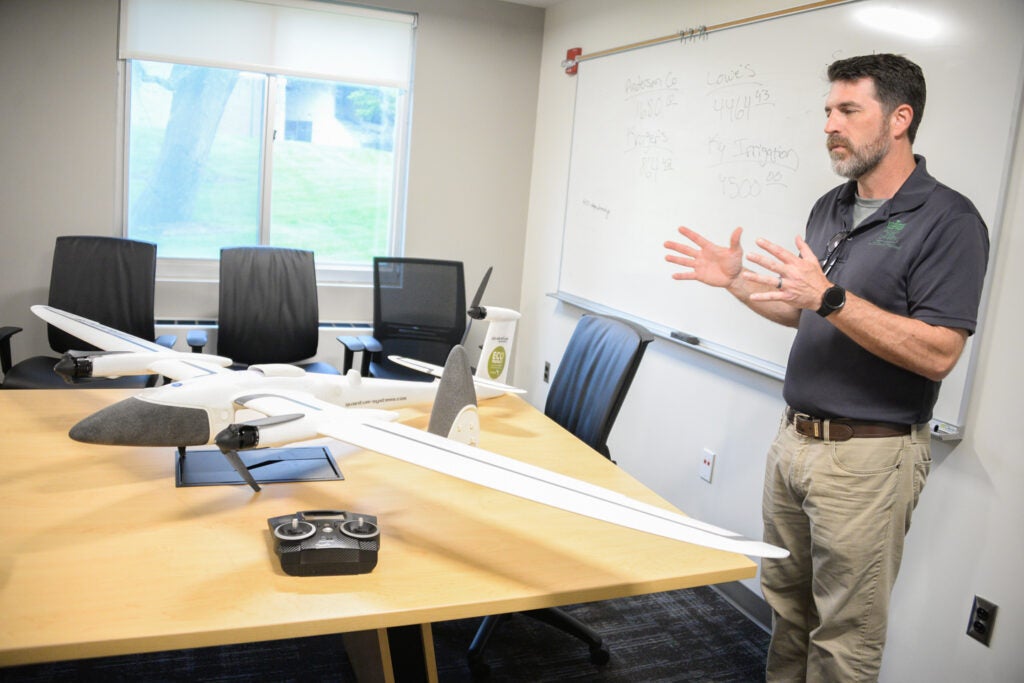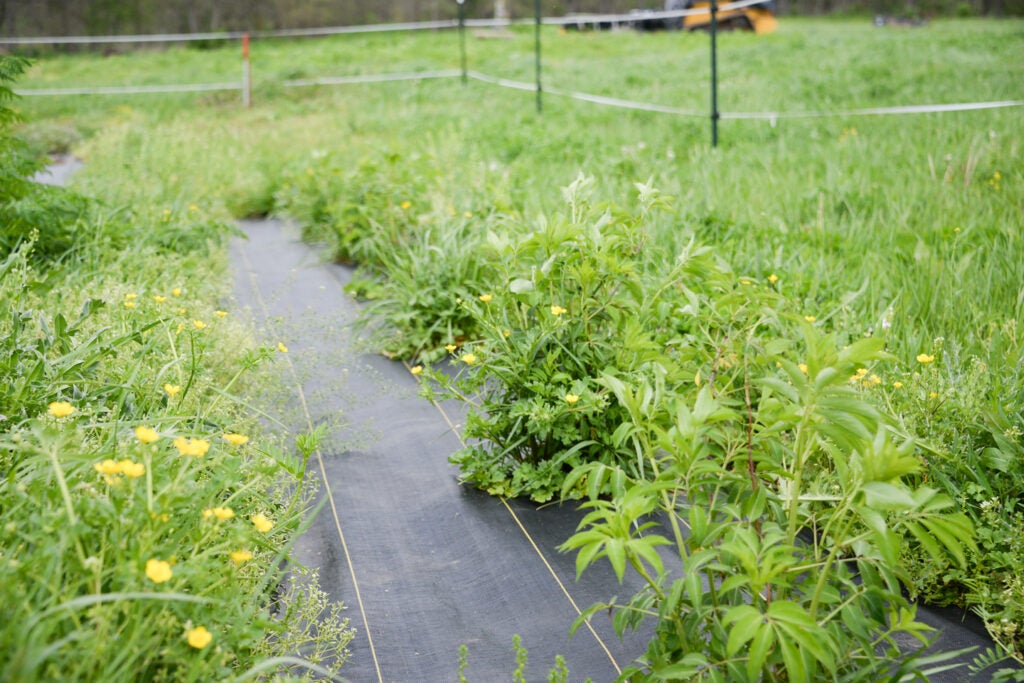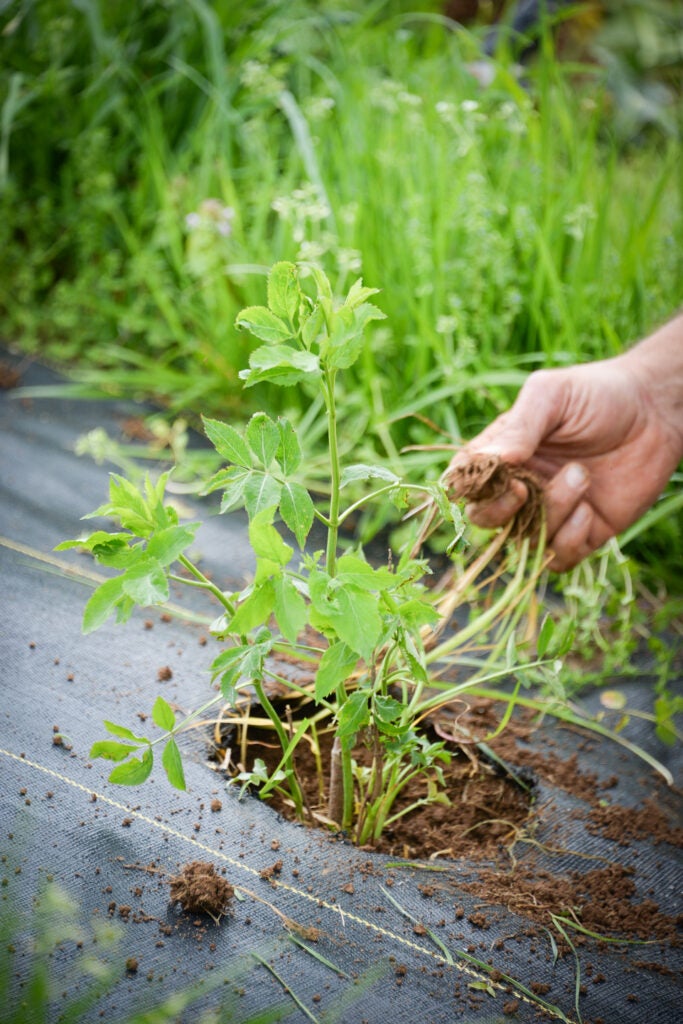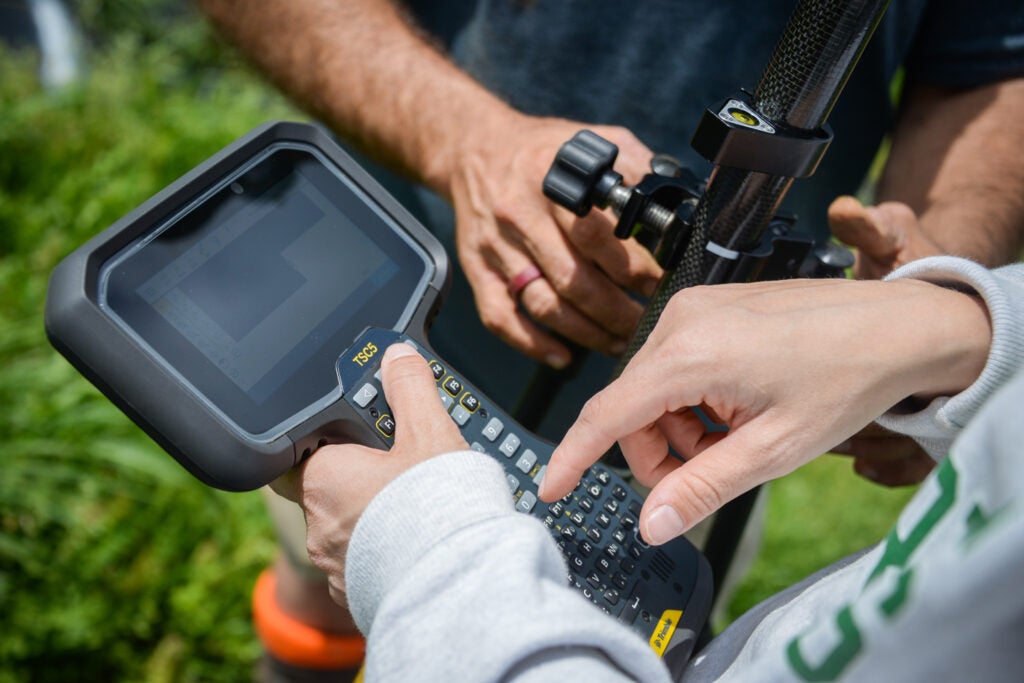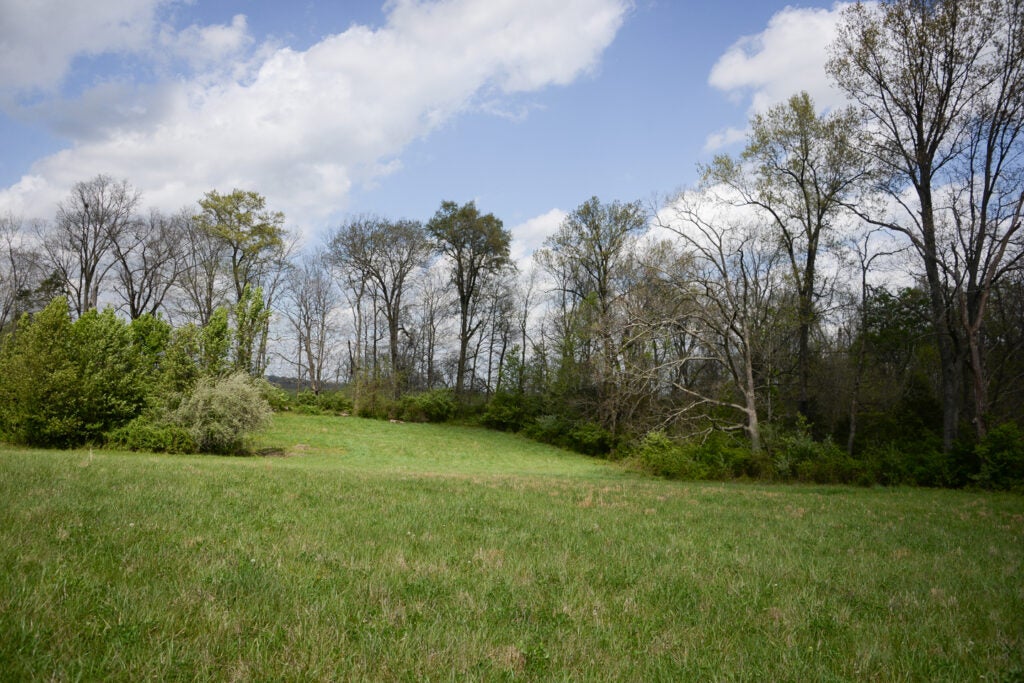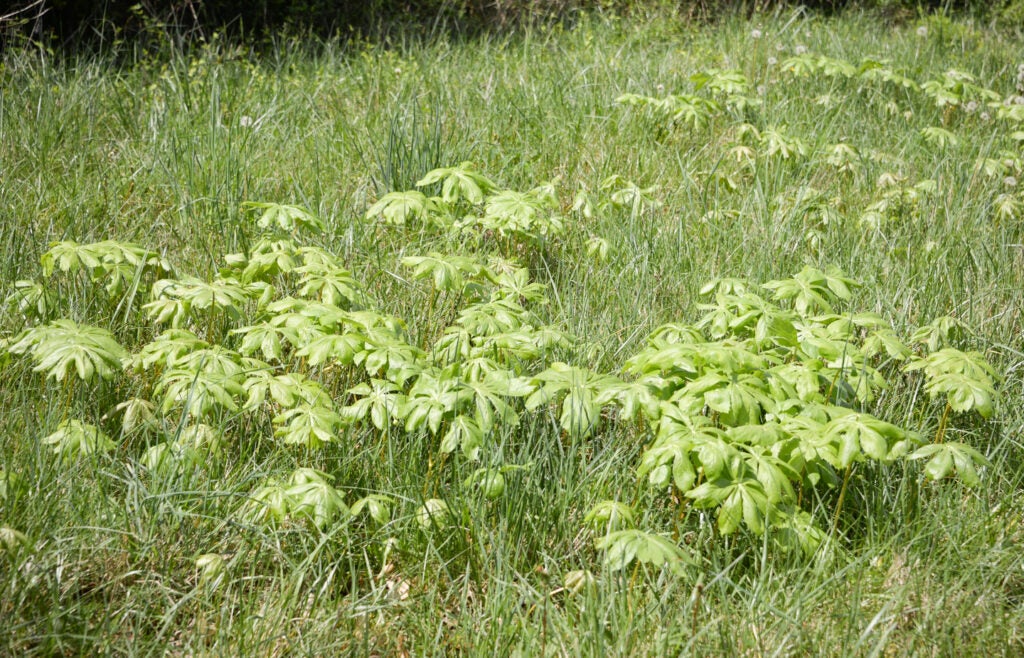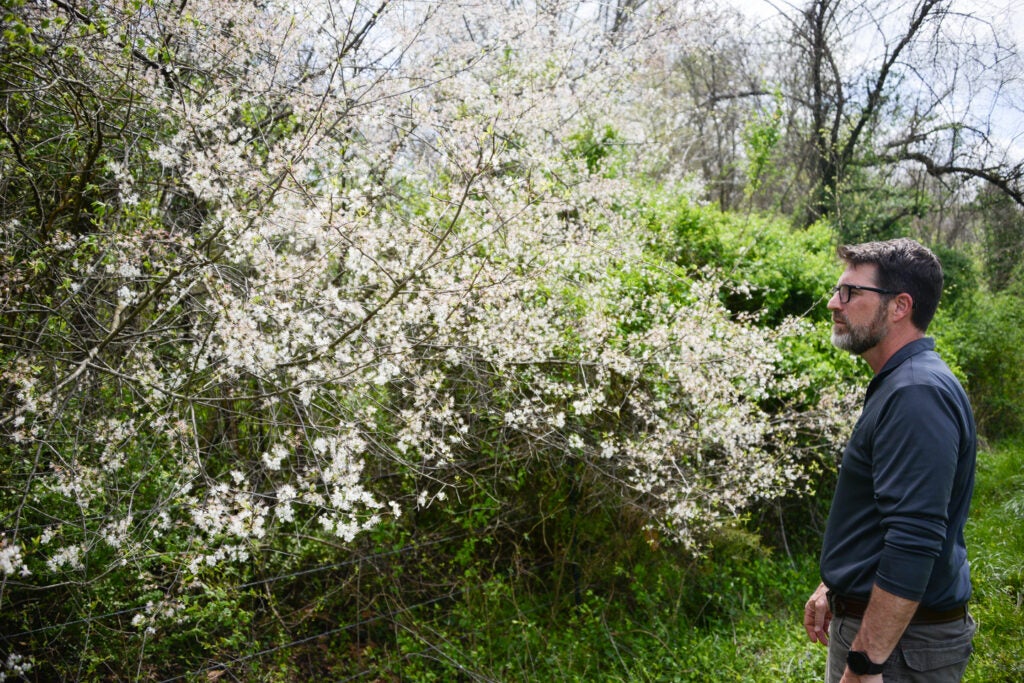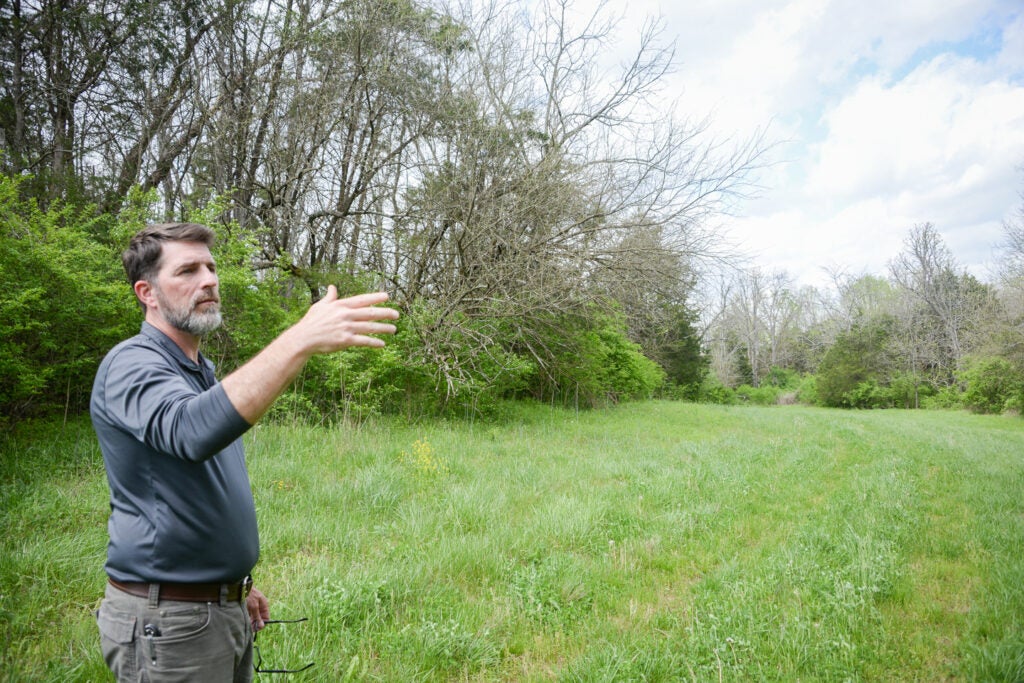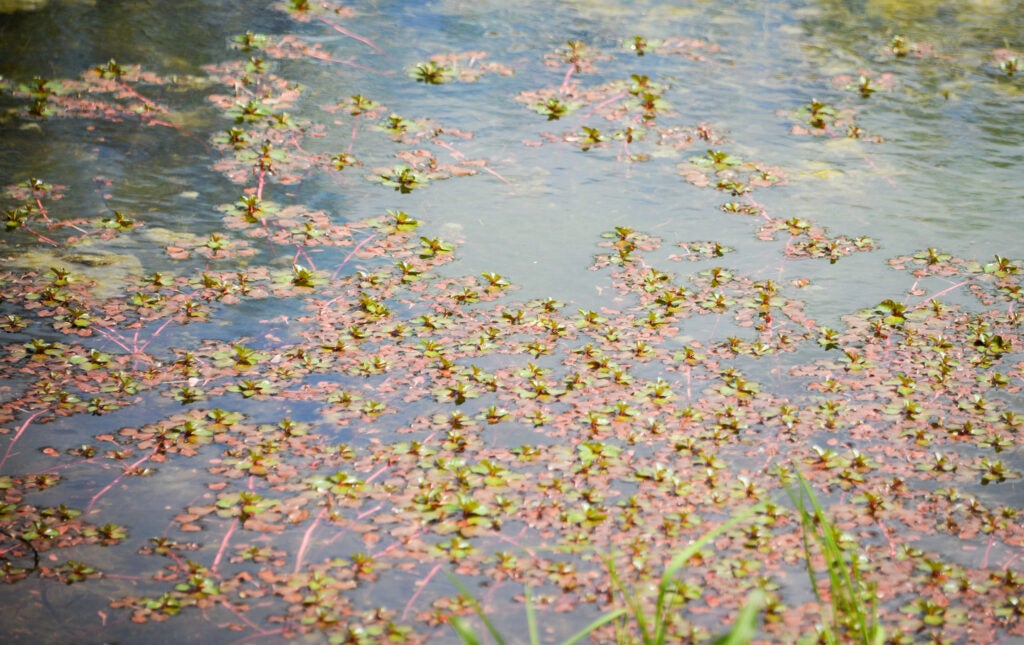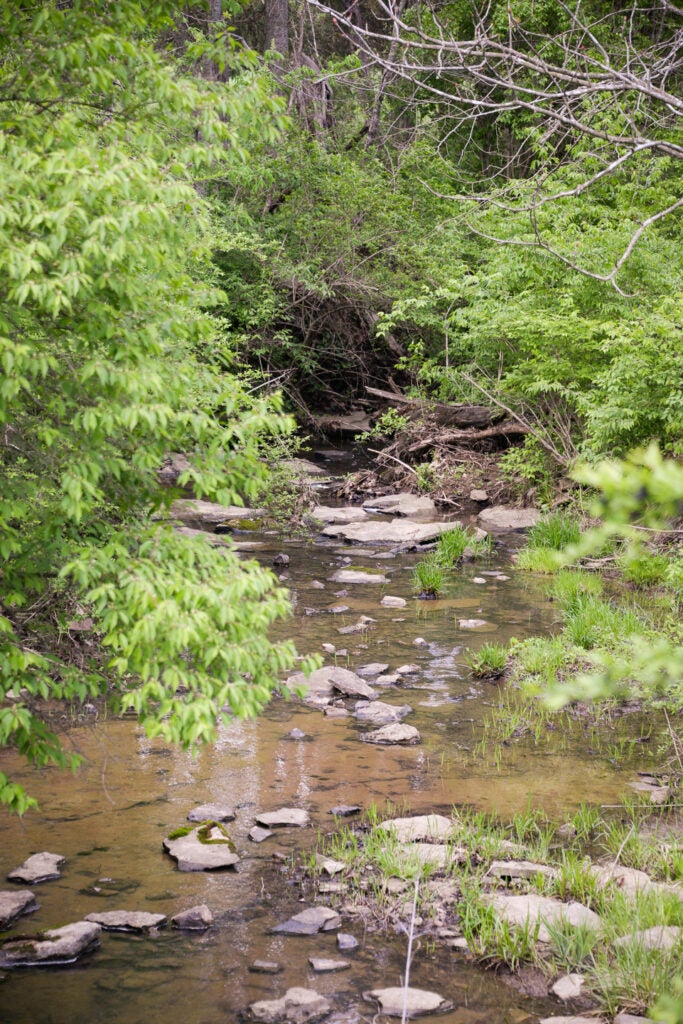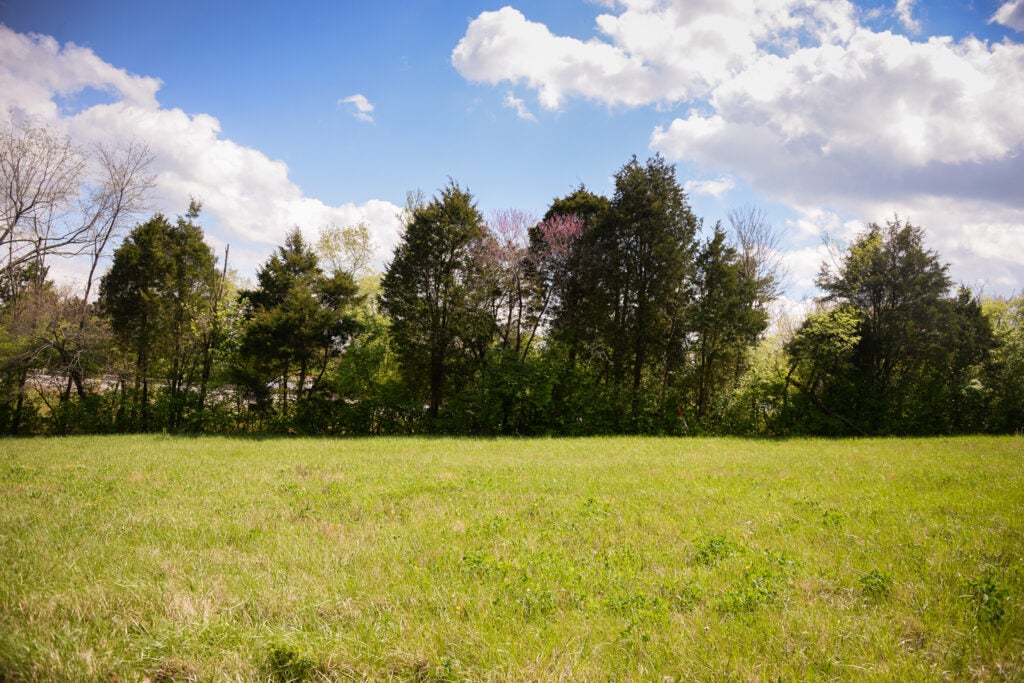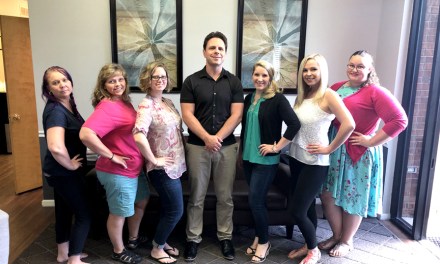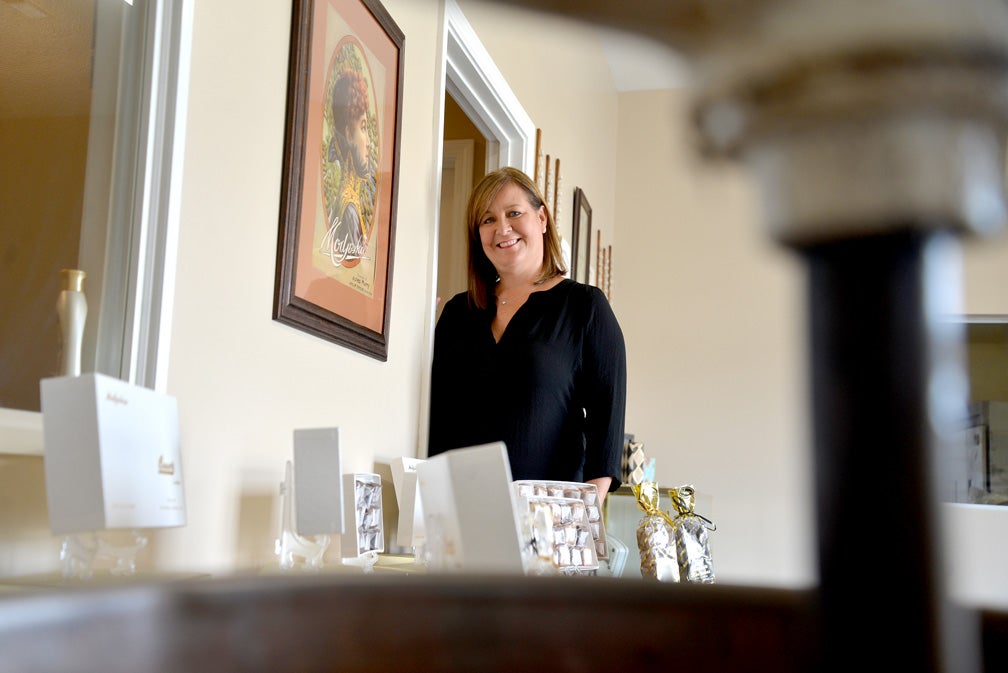The future of the world as we know it relies on technology, and that holds true even down to one of our basic needs — food.
Blazing the trail for more economical and conservatory farming techniques are staff and students at the Kentucky State University’s School of Agriculture, Communities and the Environment. Armed with a fleet of impressive drones and land survey equipment, KSU staff work across the state helping small farmers better their practices.
One of the leaders of the cause is Jody Thompson, senior research and extension associate of forestry and natural resources at KSU School of Agriculture, Communities and the Environment.
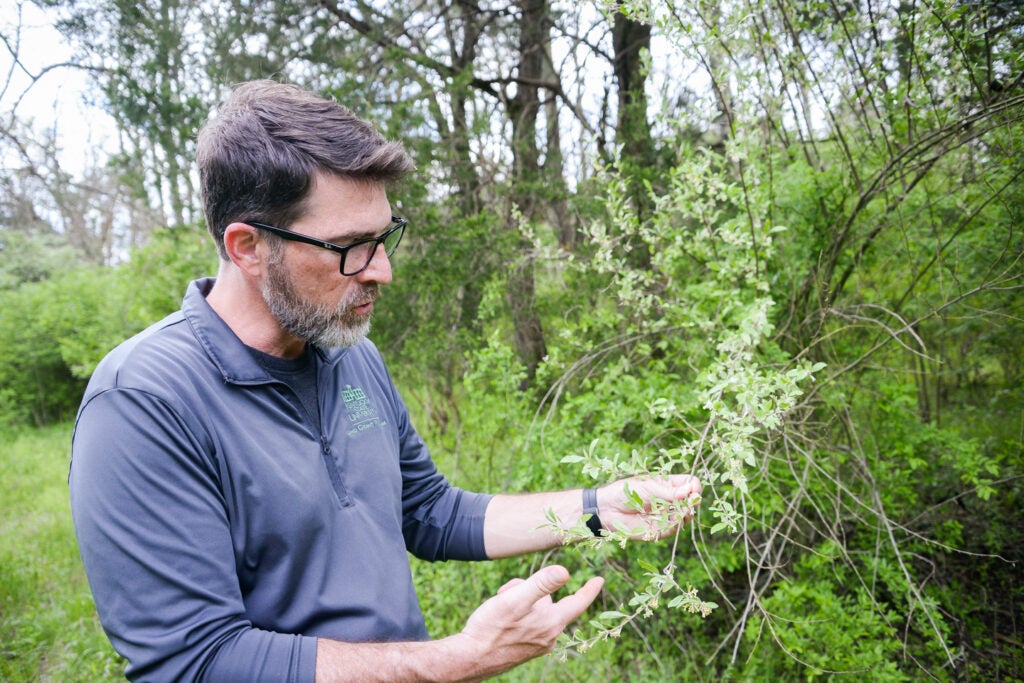
“The future of farming is continually moving toward more efficient and sustainable systems,” Thompson said. “This means more integrated production, more efficient production systems, improved technology and helping producers better understand the positive role of the ecological process in farming, (such as utilizing) native pollinators and healthy soil ecosystems.”
Thompson was hired at KSU three years ago to help expand the KSU forestry and natural resources program. He oversees a seven-person team that addresses needs related to forest health, pollinator habitat and agroforestry, which is “the intentional integration of trees and shrubs into crop and animal farming systems to create environmental, economic and social benefits,” according to the U.S. Department of Agriculture.
“We’re essentially a new conservation and agroecology unit (not an official name) that develops research projects and cooperative extension training programs to address the day-to-day needs of landowners, land managers and farmers,” Thompson said.
He said their current task list is pretty long and statewide. KSU staff have projects that utilize drones and GIS (geographic information systems) technology, invasive plant management, forest health assessments, incorporating goats into natural areas management, pollinator habitat management, native bees, wildlife, agroforestry practices and training workshops/symposia.
In Frankfort, Thompson and his staff are currently surveying the 60 acres of woodlands on KSU’s main campus. Staff are completing a bird survey and working to make ecology management improvements. They are also looking into converting power line right of ways into pollinator habitats.
On the west side of town, KSU purchased 106 acres of land, which includes farmland, woodlands and two streams. The “West Farm” — the property’s unofficial name — is located off of Arbor View Drive.
The property is being used for a variety of practices including alley cropping, the agricultural practice of planting crops between rows of trees or shrubs. Livestock can also be kept in the rows.

“We have an alley cropping research project that examines the benefits of planting elderberries (a native, perennial shrub) with common vegetable crops,” Thompson said. “We’re examining crop yield, plant health, soil health and native bee utilization.”
Alley cropping has many benefits, Thompson said, including:
• The ability to grow multiple crops in a single space (multiple revenue streams, efficient use of space).
• The ability to grow perennial crops that may take years to mature — such as nuts, fruit and timber — while simultaneously seeing a financial return from short-term crops — such as vegetables or grains — in the same space.
• Trees or shrubs can provide shade, and many vegetables, small fruit crops and livestock benefit from some shade during the hottest part of the growing season. This is evident in tropical systems where you see coffee and cacao farms.
• It gives you a perennial, woody root system that improves soil structure and organic matter content.
• It adds vertical structure and food resources to benefit wildlife. Certain alley cropping systems can benefit from diverse bird communities while others will benefit from diverse insect communities. Your goals may also include improving general ecological function and adding plants — mostly native plants — that are always present will do that for you. It needs to be well thought out though since some crop combinations and arrangements are better than others, depending on your goals.

Taylor Pinkerman, KSU forestry and natural resources research and extensions assistant, said the elderberry will grow to be six to eight feet tall and will also act as a wind barrier.
“A lot of beans twisted last summer,” Pinkerman said. “We had a lot of problems with the wind.”
Pinkerman said this year they will be growing acorn squash, bush beans and peppers between the rows of elderberry.
Thompson said some of the vegetables and elderberry will be sold or used on campus in the Student Center
“It gives the students an opportunity to grow and market it,” he said.
West Farm is also being used as a site to organize workshops on container production of native small fruit crops for small-scale producers, which will provide student-training opportunities. Thompson said site preparation has also begun for an additional vegetable production area that will become the basis to providing students with experience throughout the supply chain.
The site is also being used for land management training for forestry and natural resource staff, and biological surveys are being conducted.
“Staff started bird and plant surveys almost immediately after purchase,” Thompson said. “These will inform future wildlife and land management research plans and provide a structure for undergraduate students to become involved in our growing ecological work.”
KSU Cooperative Extension and partners will also have a presence at West Farm to include environmental education, agriculture workshops and natural resource management training for the public, Thompson said.
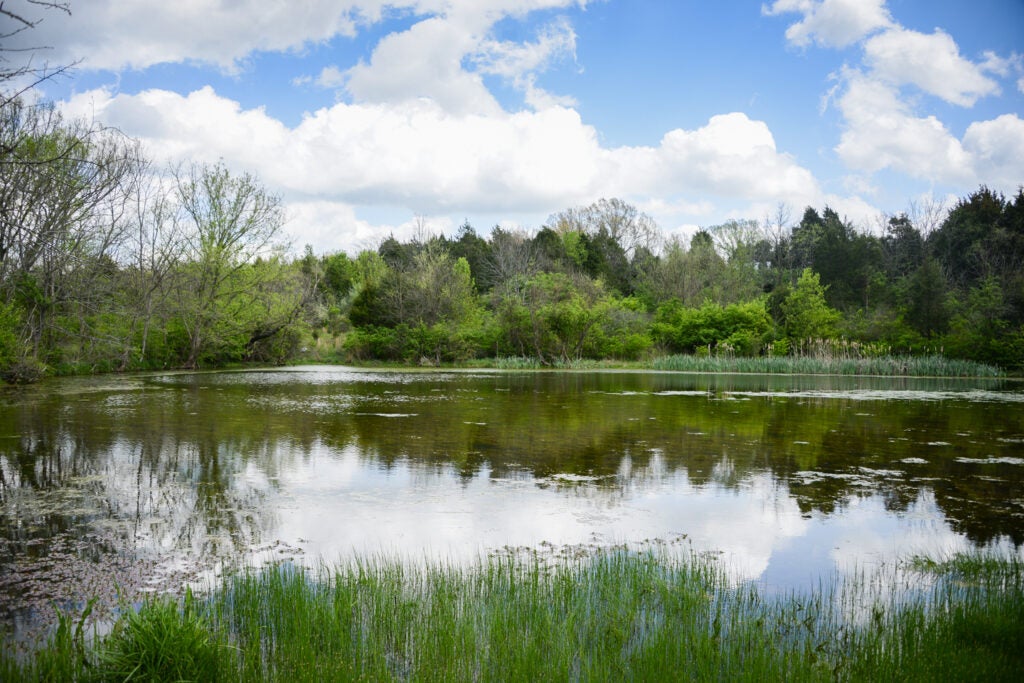
Marcus Wilkerson is a student and farm technician at the KSU School of Agriculture, Communities and the Environment.
“As a student, my education is as much through the act as it is through self-study and the classes that are offered here at Kentucky State,” Wilkerson said. “With the current body of knowledge, I cross reference that with new experiences, leveraging that to create new opportunities for discourse amongst my colleagues, professors and mentors. As a result, new opportunities are created and new skills across STEM platforms are acquired. This is both empowering and productive.”
Wilkerson is learning to promote the growth of native plants/crops, while discouraging the growth of invasive plant species that compete for vital nutrients. The tasks can be both reactive and pre-emptive, he said.
“Mind you, invasive pests are not only plants, but also vertebrates and invertebrate species that threaten the growth and survival of the desired crop.”
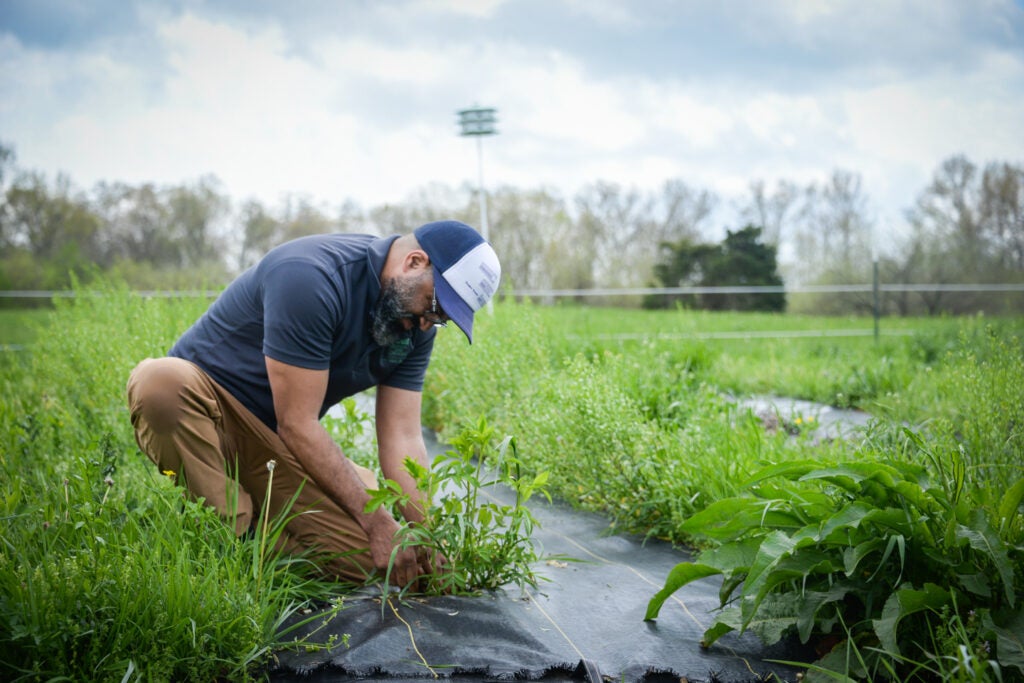
Wilkerson is working with field biologists and researchers for the alley cropping project, which is headed by Thompson.
“I find that much of this experience fosters my goals to own forest farmland,” Wilkerson said. “With my land, I plan to be a producer of various value added products for both culinary and medicinal usage. In addition to the learning of a multitude of land management practices, I am also granted opportunities for certifications that further my marketability as an agriculture professional.”
Wilkerson is also heading up supply-chain efforts to source out destinations for each elderberry harvest from West Farm.
“In so doing, I act as a liaison representing Kentucky State University to help small farmers achieve their goals. It is our mission to help the small farmer and land manager establish the best practice for them — catering to their specific need and crop.”
For the alley crop project, Wilkerson said KSU staff is focused on crops that “are representative of a broad scope of the row cropping industry, offering new suggestions for future markets that farmers can participate in, giving them a seat at the table to establish new markets and acquire market shares where they may not have, otherwise.
“As we break ground, so does the industry. That makes me proud.”
Along with breaking ground, KSU staff is also making airwaves with their fleet of drones. Leading those efforts at KSU is Jeremy Sandifer, a state specialist in agriculture technology. He works with individuals interested in the use of mapping and other technologies for characterizing and monitoring of managed land areas, he said.
“Kentucky State University is blessed with an impressive fleet of drones and many advanced sensors capable, for example, of imaging all parts of the electromagnetic spectrum and helping to quantify the photosynthetic activity and overall health of vegetation growing on the surface,” Sandifer said.

Staff has also been experimenting with laser scanning devices that capture ultra-realistic 3D point clouds depicting ground and surface features, which is “useful for helping quantify the spread of invasive species or estimating growth rates for corn and soybean plots.”
One of the drones being used is a Mavic 3, which has a multi-spectrum camera and can see bands of lights naked to the human eye.
“We use it for monitoring and picking up extra data,” Thompson said. “It allows us to see plant changes. It won’t tell us what species of plants are there, but it will tell you how much of it is there.”

Thompson said the Mavic 3 helps them to find mass amounts of weeds or invasive plants, like bush honeysuckle.
“Before, we would have to walk the land. It took a long time,” Thompson said. “People can now go from small amounts of conservation to huge amounts of conservation.”
John “JJ” Haney, KSU senior research and extension associate, uses the Mavic 3 often for his work for documenting plant growth and plant placement when laying out the plot.
“We can see the progress and plant growth throughout the year,” Haney said.
Another drone in their arsenal is the Quantum Trinity F90+, which has a long battery life. Thompson said the drone can fly over a 2,000-acre strip mine in a day on a couple of batteries. In a strip mine, KSU staff is looking for the types of vegetation coverage occurring in different areas of the mine.
KSU also has drones that can spread herbicides, pesticides, fertilizer and seeds.
Sandifer is also interested in using similar monitoring technologies for indoor growing situations like traditional greenhouse and vertically oriented container systems.
Sandifer said he generally works directly with interested producers through hands-on demonstrations of the technology and also works with extension-oriented professionals through skill development workshops and other training opportunities.
“The primary advantage of autonomy in agriculture and natural resources is the reduction of labor,” Sandifer said. “The primary advantage of ‘digital twin’ documentation is understanding how the land changes over time, presumably in response to the management strategies implemented. I hope to continue seeing more of this.”
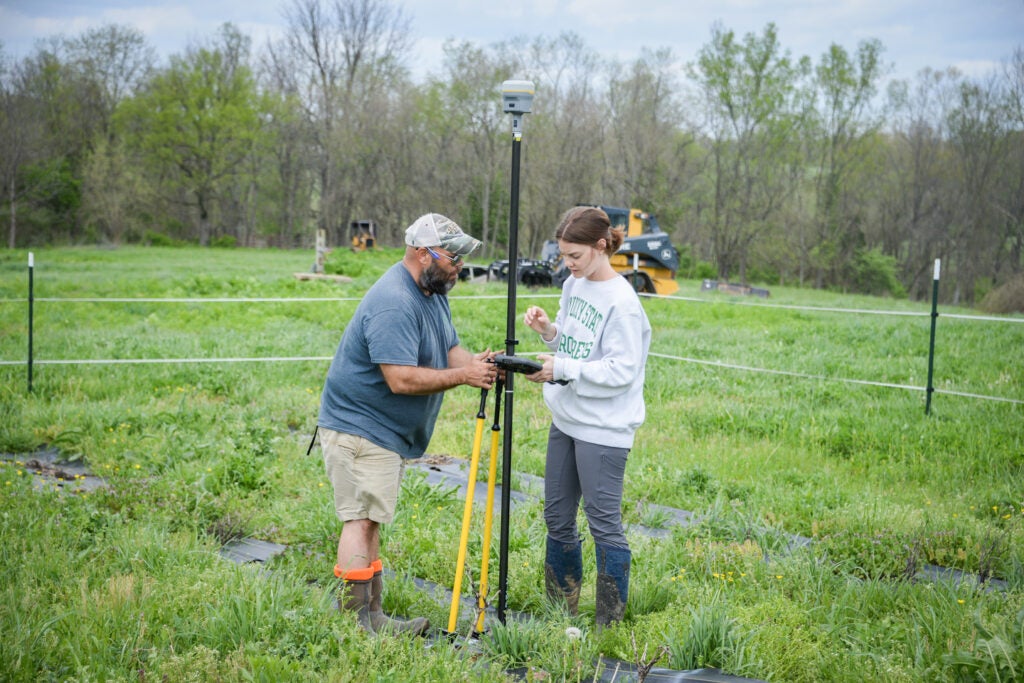
Heading up the GIS technology courses at KSU is Dr. Buddhi R. Gyawali, professor of geospatial applications, climate studies and human dimensions of natural resources. Currently, he serves as interim director of graduate studies and oversees eight graduate programs. He is also the director of the Summer Apprenticeship Program (SAP) and project director of 11 different federal grants with over $4 million funded by USDA, National Science Foundation (NSF) and the Department of Energy (DOE). He teaches three courses: introduction to GIS, Remote Sensing of Environment and Climate Studies.
Gyawali is currently working on a long-term ecosystems change research project in seven Eastern Kentucky counties. He is looking into the impacts of surface coal mining on soil, water, vegetation, microclimate and quality of life in the counties. His research team uses satellite, airborne LiDAR (light detection and ranging) and hyperspectral data to study topographic, geomorphological and land cover changes.
Gyawali also runs a geospatial teaching and learning lab where five graduate and 10 undergraduate students work on various geospatial projects. His NSF and DOE grants provide stipends for about 30 undergraduate and 10 graduate students to perform experiential and thesis research. Gyawali’s NSF-funded grant has supported SAP every year since 2015. SAP assists high school students in preparing for their college careers in the STEM field. The grant also helps students obtain research experiences through mentor-guided research projects at KSU during the summer months.
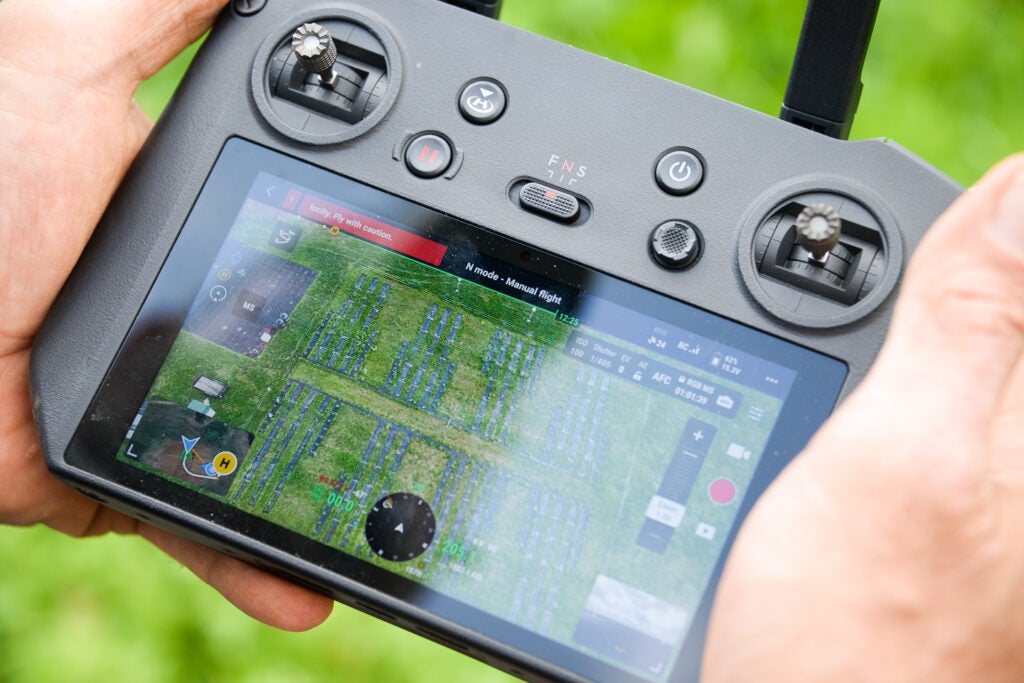
“Over 90 students have benefited from this program in the past,” Gyawali said.
This year’s SAP will be June 13-July 14. Gyawali said KSU is expecting to recruit about 20 high school rising juniors to participate in the program.
Gyawali has recently developed a new program at KSU called Experiential Research in Overseas. It’s a USDA-funded grant initiative to prepare for increasing diversity in international workforce development. The grant supported 11 KSU undergraduate students and five faculty/ staff members to visit Jamaica, Dominica and Virgin Islands. He took an additional four students and four faculty/staff members to Rwanda in May.
For those interested to learn more about what KSU is doing for the agriculture community, Thompson recommends learning more about the Small-Scale Farm Grant program, KSU-hosted farmer education events and on-farm technical guidance from KSU’s many cooperative extension professionals.
Thompson said they can also assist with providing connections and they take requests. If a farmer or group identifies a specific training/educational need that their region/location, KSU staff will lend a helping hand.
“We’re not only doing the work to seek answers about how to be better producers and land stewards, but we’re also teaching others how to do it,” he said. “We’re training a new generation to become high-performing and ethical producers through these upcoming initiatives with KSU’s student body.”
Diamate Price, a KSU graduate and now research and extension assistant, said that he hopes people take advantage of the opportunities they have when it comes to growing their own food.
“If you grow it yourself, you have more feeling and you’re drawn to it,” Price said.
To learn more about the agriculture program at KSU, visit www.kysu.edu.
